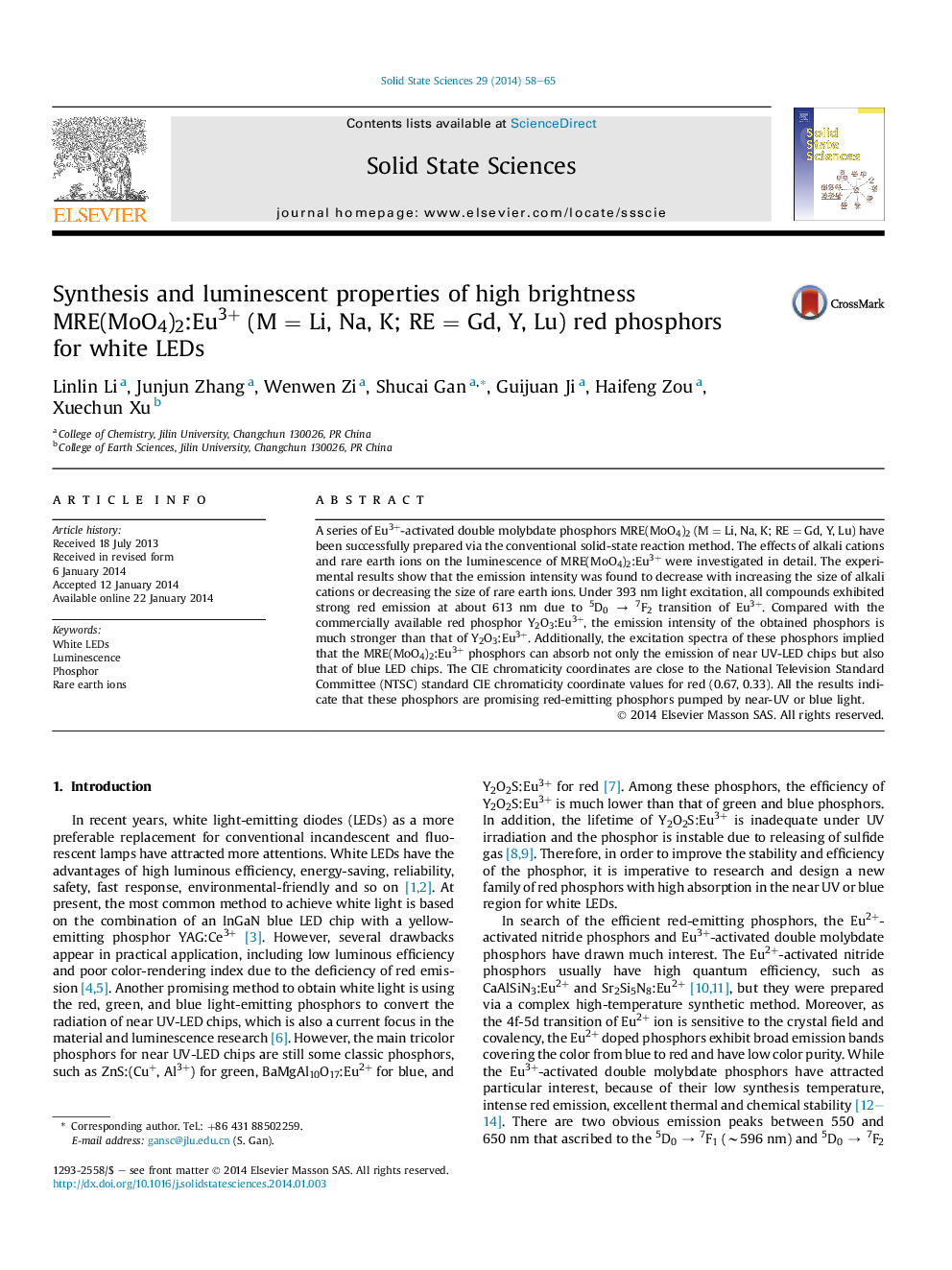| Article ID | Journal | Published Year | Pages | File Type |
|---|---|---|---|---|
| 1504557 | Solid State Sciences | 2014 | 8 Pages |
•Eu3+-activated MRE(MoO4)2 have been successfully prepared via the solid-state method.•The emission intensity was found to decrease with increasing the size of alkali cations.•The emission intensity was found to decrease with decreasing size of rare earth ions.•The emission intensity of the obtained phosphors is much stronger than that of Y2O3:Eu3+.
A series of Eu3+-activated double molybdate phosphors MRE(MoO4)2 (M = Li, Na, K; RE = Gd, Y, Lu) have been successfully prepared via the conventional solid-state reaction method. The effects of alkali cations and rare earth ions on the luminescence of MRE(MoO4)2:Eu3+ were investigated in detail. The experimental results show that the emission intensity was found to decrease with increasing the size of alkali cations or decreasing the size of rare earth ions. Under 393 nm light excitation, all compounds exhibited strong red emission at about 613 nm due to 5D0 → 7F2 transition of Eu3+. Compared with the commercially available red phosphor Y2O3:Eu3+, the emission intensity of the obtained phosphors is much stronger than that of Y2O3:Eu3+. Additionally, the excitation spectra of these phosphors implied that the MRE(MoO4)2:Eu3+ phosphors can absorb not only the emission of near UV-LED chips but also that of blue LED chips. The CIE chromaticity coordinates are close to the National Television Standard Committee (NTSC) standard CIE chromaticity coordinate values for red (0.67, 0.33). All the results indicate that these phosphors are promising red-emitting phosphors pumped by near-UV or blue light.
Graphical abstractFigure optionsDownload full-size imageDownload as PowerPoint slide
